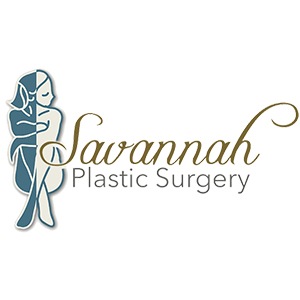A facelift is a surgical procedure where the goal is to restore a more youthful appearance. Typically, this is achieved by removing excess skin and tightening tissue under the skin. It can involve either the upper or lower half of the face, or both. Common target areas for a facelift include the:
- Chin

- Neck
- Jawline
- Mouth
- Nose
- Eye area
A facelift can revitalize your look and help to match your appearance to the vitality of your daily life. But before you decide to refresh your look with this procedure, you probably have questions, including a few about recovery, like:
- Is a facelift painful?
- How long does swelling last after surgery?
- How long does it take to recover from a facelift?
Everyone experiences facelift recovery slightly differently. Below are some expectations.
How Long Does Facelift Recovery Take?
Your exact facelift recovery time depends on a number of factors, but for most people it’s around two months. Some things that might affect your facelift recovery include:
- The kind of facelift you have, and the surgical techniques used
- Your general health – The better your health, the faster you heal.
- Whether you’re a smoker – Smoking is contraindicated for safe and effective facelift surgery.
- Your age – Younger people tend to heal more quickly, as skin is more elastic
- How well you follow post-surgery instructions
The Day of Surgery: What to Expect
For surgery you will receive a local or general anesthetic. Afterwards, you’ll have some tenderness and pain in your face, and if you’ve had a general anesthetic, you’ll feel groggy when you wake up.
You may not see much of a difference in your facial appearance at first. Some parts will be covered by bandages, and there may be drainage tubes. The swelling will also obscure your results. Don’t be alarmed if you think things look a little strange! Once the bandages are off and the swelling goes down, you’ll start to see your facelift results.
Some people go home the same day they have a facelift, while others stay overnight and return home the next day. You might stay overnight if you had a more complex procedure or a higher risk of complications. At Savannah Plastic Surgery, we treat every patient as an individual and focus on keeping you safe and comfortable.
In the First Few Days and Weeks
During the first few days of facelift recovery time, you’ll likely experience some discomfort. Your surgeon will have supplied you with a prescription or recommendation for pain relief, so you shouldn’t be in significant pain. The pain should subside after around a week.
It’s normal to have bruising, swelling, and tenderness. You may also feel tightness in the face and neck. The facial swelling may be uneven, or more pronounced on one side of your face. This is normal too, and it doesn’t mean the results of your facelift will be uneven.
All of this is a natural part of facelift recovery. The tissues in your face are altered during surgery, so we expect them to be tender and swollen for a period of time. This also means your facelift results are hard to see at first.
Your surgeon will provide instructions to follow during your facelift recovery period. Try to follow them exactly, so your recovery proceeds smoothly and safely. Instructions may include:
- Wear clothes that are easy to put on – Shirts and sweaters are easier if they open at the front, so you don’t have to pull them over your head.
- Make sure incision sites stay dry and clean – You may need to avoid bathing and showering for the first few days, to keep surgical sites dry.
- Rest and sleep with your head elevated for the first few weeks to reduce swelling.
- Stick to soft foods for the first week – Some pain medications may cause constipation, so make sure to have plenty of fiber.
- Enjoy a nutritious, high-protein diet to aid healing, and stay well-hydrated too.
- Cool compresses (but not ice) can help relieve swelling and tenderness, but don’t apply any heat to your face.
- Keep your activity level low during the first few weeks – It’s good to move around, but stick to walking. Avoid moderate to high-impact exercise and exertion, such as jogging, weightlifting, and aerobics or Pilates.
- Too much sunlight may irritate incisions and scars, so protect your face from direct sunlight during and after healing.
Follow-Up Appointments
You may have a follow-up appointment on the second or third day after surgery. The surgeon will change your surgical dressings and inspect your incisions to make sure they’re healing well.
You’ll have another appointment to remove your stitches. This may happen anywhere from one to three weeks after surgery, depending on your progress and on the kind of procedure you had.
When to Seek Medical Advice
It’s normal to have symptoms such as bruising, swelling, and tenderness during facelift recovery. But there are some symptoms that may be signs of an infection or another issue. If you experience any of the following, call your doctor or surgeon for advice:
- Severe pain, or pain that gets worse after the first day or two
- Severe swelling, especially if it’s limited to one part or side of the face
- Increase in bleeding from incisions
- Pus or pus-like discharge from incisions
- A temperature of 100° F or more
- Stitches or drainage tubes that come out
Two Weeks After Surgery
At the two-week mark, most people can return to work. If you still have bruising, it can be safely covered with makeup. People with physically strenuous jobs may need to stay home for a little longer. Your surgeon will let you know when it’s okay to get back to work.
Even though most of the bruising and tenderness may be gone, your face is still healing at this point. You may feel unusual sensations, such as:
- Tingling
- Tickling
- Tightness
This is a normal part of the healing process during facelift recovery. If you feel anxious about any sensations or you have any signs of infection, don’t hesitate to call your doctor or surgeon for advice.
At this point, the swelling will have gone down enough that you’ll start to see your facelift results. This is an exciting time! Remember that it will still be several weeks until your recovery is complete and you see the final results.
Four to Six Weeks After Facelift Surgery
By this point, your facelift recovery time is just about over. There may still be some pockets of slight swelling, but most swelling and bruising should have subsided by now. You may still feel tingling or tightness, but this will lessen over time.
If you have a physically demanding job, you will have been cleared to return by now. You can also safely resume high-impact exercise.
Two Months Later
Two months after surgery, your recovery is all but complete. Most or all of the bruising, swelling, and tenderness should be gone, and you’ll be loving your new, youthful appearance. You can resume any exercise and activities you enjoyed before surgery, even high-impact ones.
You may still be able to see your scars, but they’ll fade over time. An experienced surgeon knows to make incisions at sites that are easily covered, so there’s no need to worry about whether your scars are visible to others. It’s very likely that you are the only one who notices them!
A Great Facelift Is Worth the Recovery Time
It may be a physically intensive process, but having a facelift can help you look and, more importantly, feel amazing! After your procedure, take good care of your skin by limiting alcohol, smoking, and sun exposure to keep the results of your facelift looking amazing.
Ready to talk to an experienced surgeon about a facelift? Contact us at Savannah Plastic Surgery for a complimentary consultation. We’ll answer your questions about prep, results, recovery, and more.

